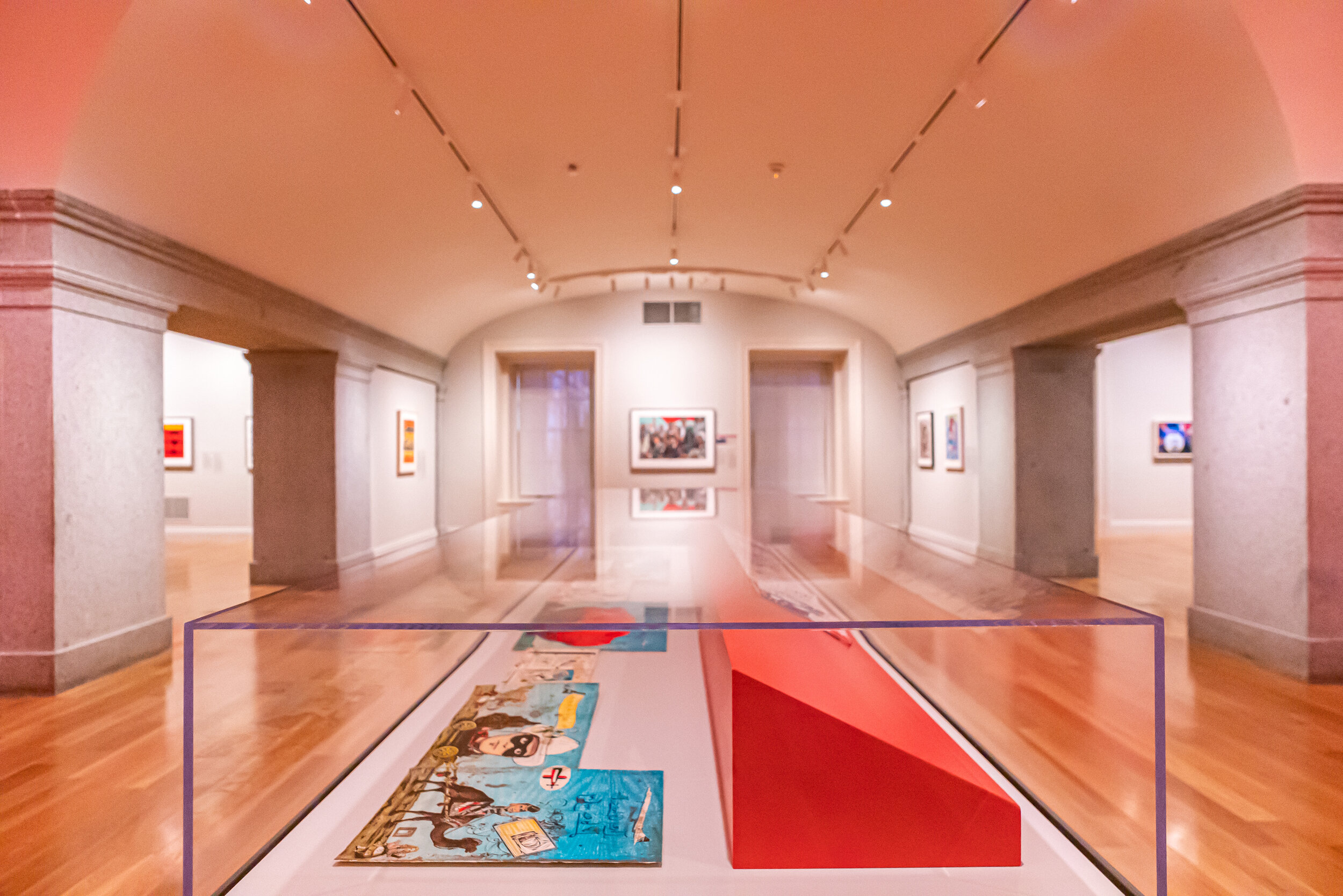
CLAUDIA ZAPATA IS A SPECIALIST IN LATINX AND CHICANX ART.
Claudia E. Zapata (they/them) earned their Ph.D. in art history at Southern Methodist University’s RASC/a: Rhetorics of Art, Space, and Culture program. Their dissertation is titled “Chicano Art is Not Dead: The Politics of Curating Chicano Art in Major U.S. Exhibitions, 2008-2012.” They received their BA and MA in art history from the University of Texas at Austin, specializing in Maya art from the Classic period (250-900 CE). Their research interests include curatorial methodologies of identity-based exhibitions, Chicanx and Latinx art, digital humanities, BIPOC zines, and designer toys. Zapata was the curator of exhibitions and programs at the Mexic-Arte Museum in Austin. They curated several Texas exhibitions, including A Viva Voz: Carmen Lomas Garza (2009), Sam Coronado: A Retrospective (2011), and Fantastic & Grotesque: José Clemente Orozco in Print (2014). From 2018-2022, Claudia was the curatorial assistant of Latinx art at the Smithsonian American Art Museum, working on the award-winning exhibition, ¡Printing the Revolution! The Rise and Impact of Chicano Graphics, 1965-Now.
They have published articles in Panhandle-Plains Historical Review, JOLLAS: Journal of Latino/Latin American Studies, El Mundo Zurdo: Selected Works from the Meetings of the Society for the Study of Gloria Anzaldúa, Hemisphere: Visual Cultures of the Americas, Latin American and Latinx Visual Culture, and Aztlán: A Journal of Chicano Studies. Their essay "Chicanx Art in the Digital Age” is featured in the ¡Printing the Revolution! The Rise and Impact of Chicano Graphics,1965-Now exhibition catalogue, published by Princeton University Press in association with the Smithsonian American Art Museum. Their essay, “The Future is Feminist: How the Maestras Atelier Transformed Self Help Graphics,” is part of the anthology Self Help Graphics & Art at Fifty published by University of California Press.
In 2024, their published essays include “Post-Internet Latinx Art: Networked Interventions in the Digital Diaspora” in the academic journal Latin American and Latinx Visual Culture and the co-authored essay with Asiel Sepúlveda, “Rethinking the Ph.D. Exam for the Study of Digital Humanities” in What We Teach When We Teach DH: Digital Humanities in the Classroom, published by University of Minnesota Press. Their recent featured essays are “The Chicana Reclamation of the Sleeping Figure: Yolanda López’s 'Mexican Chair' and Judith F. Baca’s 'Pancho'” in The Shape of Power: Stories of Race and American Sculpture published by Smithsonian American Art Museum published by Princeton University Press in association with the Smithsonian American Art Museum. Their work is part of USLAF’s (US Latinx Art Forum) debut writing initiative, X as Intersection: Writing on Latinx Art” with their contributing essay “Two-Spirit Joy: Ester Hernandez’s Queer Portraiture.”
They co-founded the Latinx art project Puro Chingón Collective in 2012. This experimental art group develops zines, prints, apparel, designs, and art toys. The collective’s zines are part of the collections at the Thomas J. Watson Library at The Metropolitan Museum of Art, Museum of Modern Art (MOMA) Library and Archives, Museum of Fine Arts-Houston, Mexic-Arte Museum, and London College of Communication Library, among many others. Zapata’s artwork has been featured at the Hawn Gallery in Dallas, the Blanton Museum of Art, Mexic-Arte Museum, and the Mexican American Cultural Center in Austin; the Carver Community Cultural Center and Lady Base Gallery in San Antonio; and the Trans-Pecos Festival in Marfa. Their designs have been part of Austin’s Fusebox Festival, Pachanga Music Festival, and the International Women's Day March in San Antonio.
From 2022-2023, Zapata was a Chancellor’s Postdoctoral Fellow at UCLA, mentored by Charlene Villaseñor Black, professor in the Departments of Art History and Chicana/o and Central American Studies. Their research topic was "Advancing to Web 3.0: Chicanx and Latine/x XR Immersive Environments, NFT Decentralization, and Experiential Visions in the Metaverse.”
In 2023, the Blanton Museum of Art in Austin, Texas, selected Zapata as their inaugural Associate Curator of Latino Art. Their current exhibition, De moda: Fashion, Ceremony, and Symbols of Resilience, is on display in the Blanton’s Latino gallery. In 2025, Zapata’s curated traveling exhibition Radical Histories: Chicanx Prints from the Smithsonian American Art Museum will be on view at Colby College Museum of Art (February 6- June 8, 2025) and The Huntington Library, Art Museum, and Botanical Gardens (November 16, 2025- March 2, 2026).
